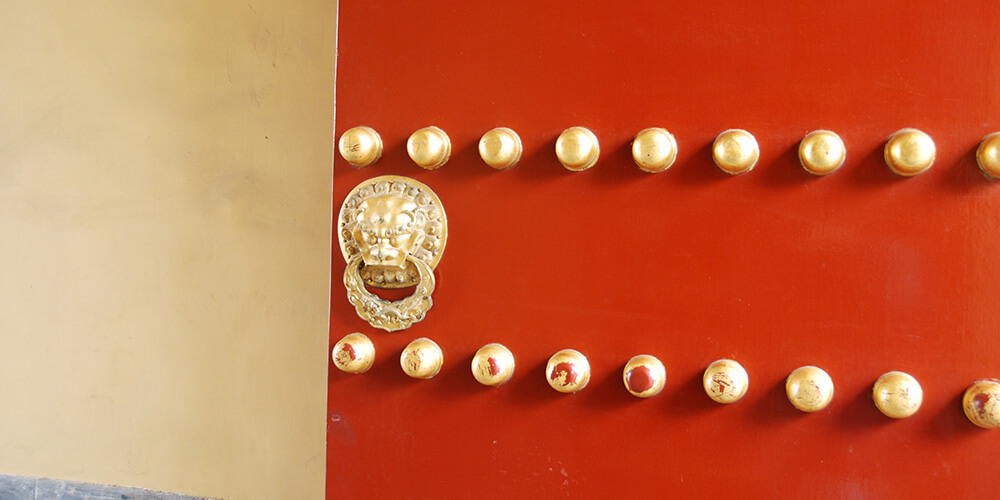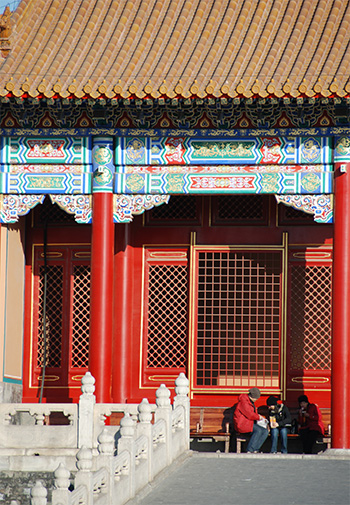This post may contain Amazon Affiliate links for which I may receive compensation.
The Forbidden City is indeed a remarkable place to see. And it is definitely at its best now, with all its recently renovated golden and red-painted buildings and its contrasting white stones, in preparation for the crowd of visitors who are coming for the 2008 Olympic Games.
While we spent 3 days touring Beijing, it was definitely the highlight of our trip.
I would recommend going to Coal Hill before visiting the Forbidden City. Coal Hill is located just north of the Forbidden City and gives you a great perspective of the city’s size and organization. It is actually interesting to know why the hill even exists: in the Feng Shui tradition, a home needs water in front of it and a mountain behind it – for good luck. The location did not allow it, so they achieved Feng Shui perfection with man-made hill and river. You can see The Golden Water River in the first courtyard.
There is indeed a lot to understand about the design of the Forbidden City:
- the Outer Court (for visitors) and the Inner Court (private quarters of the imperial court);
- in the Outer Court, and just in the center of the city – the Hall of Supreme Harmony used by emperors for special occasions (the city walls were actually destroyed and then rebuilt later so that the Hall would be right in the middle);
- in the Inner Court, the Western and the Eastern palaces and the palaces of the emperor (Palace of Heavenly Purity) and of the empress (Palace of the Earthly Tranquility) with the Hall of the union between the two, for them to meet;
- the repetition of the number 9 for luck, in all architectural details, in the number of brass studs on doors (81), the number of rooms in the city (9,999), etc.…
The Forbidden City is indeed impressive. It is actually the world’s largest palace complex.
Everything is impressive about it: the sheer size of its successive empty courtyards and buildings, the large steps with stone balusters and carved stone bas-reliefs.
And there is such a mystery associated with the place, as you walk through it, thinking that such a huge place was kept close from the world for centuries, hidden behind these thick walls and these huge heavy doors.
It is fascinating to imagine an emperor with 3000-4000 concubines and a similar number of eunuchs, living in such a space; fascinating to imagine the English ambassadors discovering its grandiose structures, as the heavy doors opened in front of them, and as they walk through the main courtyard, discovering these majestic stairs leading to the emperor, a little more at each step they took; fascinating to see the room where the emperor was receiving his guests, where the emperor signed his orders, where the empress Ci Xi was supposedly imitating the emperor’s signature to sign some orders for him, to see the silkscreen between which she was hiding and giving her orders indirectly.
Definitely the most fascinating to me, as I mentioned in a previous blog, was to see all the places where empress Ci Xi governed, just as they are described in the recent book Empress Orchid, which I read a few months ago. So, my humble advice: read Empress Orchid (see my book list for details) before coming to Beijing, come in the spring before the crowds of the Olympic Games (it is going to be simply insane then!), visit Coal Hill first, and enjoy this very unique place.
Note that I did not include any of the traditional photos of the Forbidden City. I am sure that you have seen them a thousand times.
2021 Update: If I am not mistaken, the movie The Last Emperor is the movie where you can really understand what life could be like, behind these walls.


